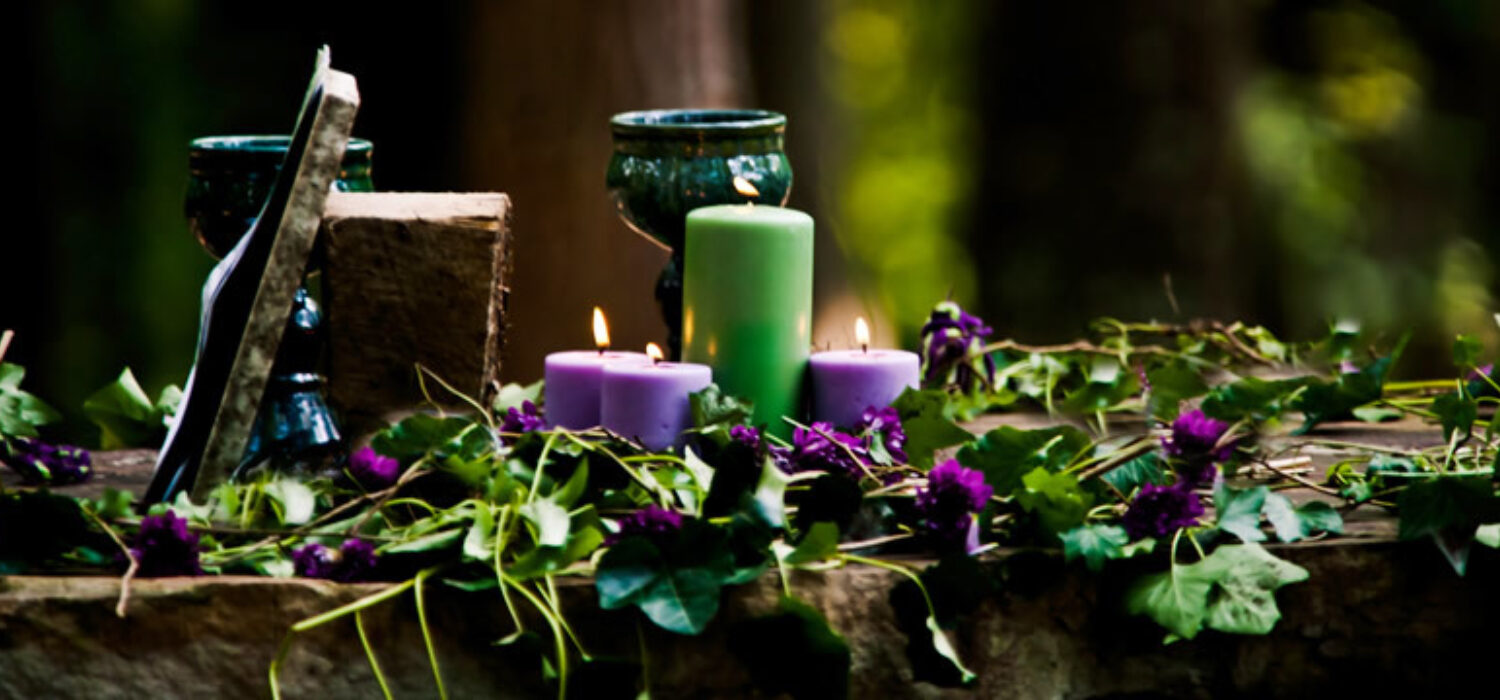
Sacred Altars for Your Home
Altars are mentioned pretty often when hoodoo, Voodoo, Santeria, or other religions come up. They act as a center of worship, a place to make magic, and a way to focus your intent by combining candles, herbs, incense, oils, crystals, and other items with prayer and meditation. There are almost as many types of altars as there are ways to use them. Some have been explored here before, but there are plenty of others worth looking into.
Choosing Items for an Altar
As a meaningful working space, picking the right items to include in an altar is important. They should be chosen based on their properties, but where they come from matters, too. Every time you bring an item in to include on your altar, you are bringing in its energy. An item that you make yourself, or purchase from an artist or occult store, will feel very differently from an item that came from a chaotic big box store.
Placing Your Altar
Some locations are more suitable for certain altars than others. Many people like to have their altars face north or east. Altars that are intended to empower the entire home are frequently located in the kitchen, or near the "heart" of a home. Altars for private meditation may be placed in bedrooms. Altars for ancestors or protective spirits are often set up in living rooms, or where the inhabitants of a home spend most of their time. What is most important is that the altar is somewhere where it is easy to access, and will not be forgotten about.
Elemental, Spirit, and Healing Altars
Elemental altars help place you in touch with the energy of a specific elemental force. Earth is grounding and stabilizing, fire is energizing, water is emotional, and air is uplifting. These altars are best placed in the area of the home that corresponds to the appropriate direction -- north for earth, east for air, west for water, and south for fire. They should be dressed with a cloth in a color corresponding to their element, and decorated with colored candles. Earth altars can also be set with potted plants or quartz crystals, air altars with incense or feathers, fire altars with candles, or water altars with dishes of water or tabletop fountains.
Spirit altars help to strengthen your connection to the divine, in whatever form it may take. These altars should be placed in an area that allows for quiet meditation. There is no set way to dress this type of altar, all you need to do is choose items that are meaningful to you. Since these altars are often used for trance and vision work, it is good to include items that strengthen these abilities. Amethyst clusters, depictions of doors or gateways, and frankincense are all good ideas to start with.
Healing altars are intended to help draw healing energies into a space. Unlike a goal altar, it may not be intended for a specific illness or situation. Instead, they can be dedicated to the concept of healing as a whole -- whether physical, mental, emotional, or spiritual. This altar can include depictions of deities associated with healing (a statue of Inle, for example), healing herbs, and bright candles. These altars should be regularly charged with lots of light, uplifting energy, so they can continue to offer healing vibrations to the space that they are in. They are excellent for making a sick room feel warmer and more peaceful, speeding healing for its occupants.
No matter what type of altar you choose for your home, the most important part of setting it up is to take your time and choose your items with care. Thoroughly research stones and herbs before deciding, and only pick those you are drawn to. The deeper of a connection you have to your tools, the better they will work with you on your spiritual journey.





